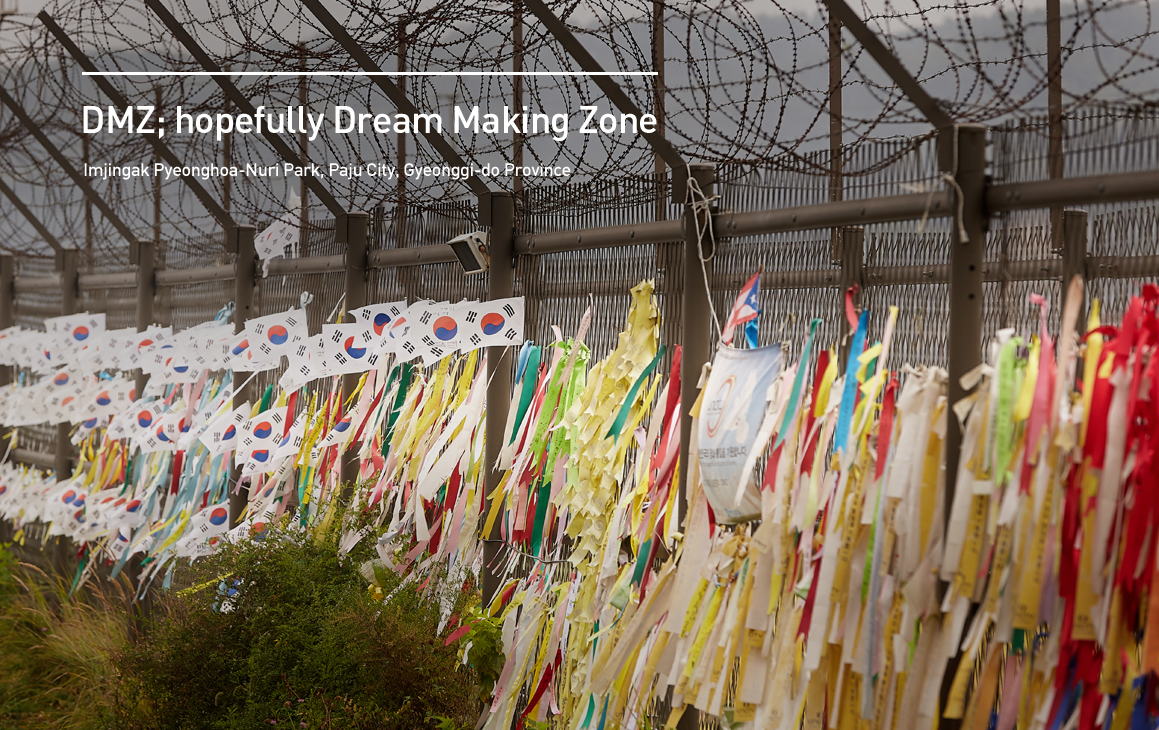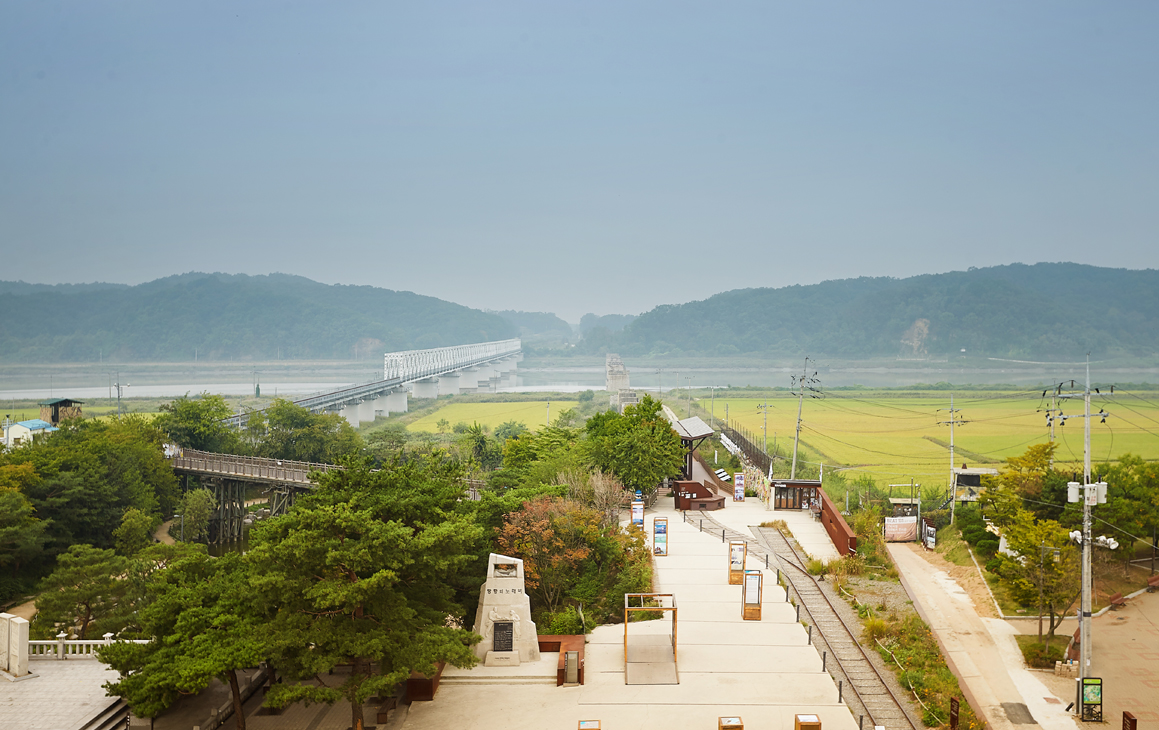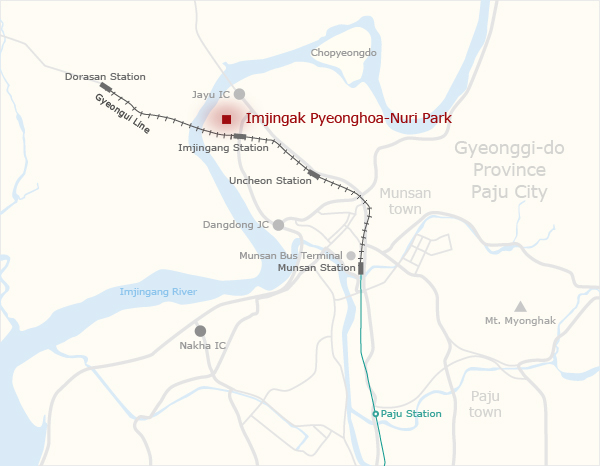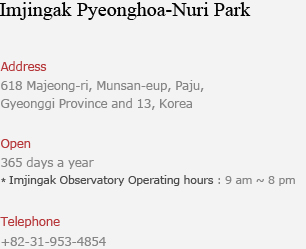

The DMZ is a symbol of Korea, which is a de facto border barrier that cuts the Korean Peninsula roughly in half.
Imjingak Pyeonghoa-Nuri Park, however, is an evidence of a land of division and
conflict transformed into a land of hope for reconciliation and coexistence, peace and unification.
The Korean Demilitarized Zone(DMZ) is a strip of land running across the Korean Peninsula;
it was established at the end of the Korean War to serve as a buffer zone between North and South Korea.
The DMZ is crossing the 38th parallel north on an angle,
with the west end of the DMZ lying south of the parallel and the east end lying north of it.
It was created as part of the Korean Armistice Agreement between North Korea,
the People’s Republic of China, and the United Nations Command forces in 1953.
Hill of Winds
Imjingak is a symbolic place on the far northern end of South Korea, facing the border with North Korea,
and the northern limit available for civilian access as well as the end of railways connecting the two countries.
As part of the world’s only divided nation, the Korean Demilitarized Zone
has become a globally renowned tourist destination in terms of national security,
with over 6 million Korean and international visitors every year.
In commemoration of the World Peace Festival in 2005,
Imjingak Pyeonghoa-Nuri Park was established in the DMZ.

Walking through the park toward the Hill of Winds, visitors will be welcomed by a thousand colorful pinwheels spinning in the breeze.
A stroll around the park is accompanied by various works of sculpture, each conveying a wish for unification.
Among the exhibits scattered throughout the park are a group of bamboo trees symbolizing calm yet intense longing for unification
and a house for a prayer pole that represents an embrace for people and the growing wish for peace and stability.

Imjingak Pyeonghoa-Nuri
The next stop is Mangbaedan Memorial Altar, where people born in North Korea gather
on national holidays to perform ancestral rites while facing their hometowns.
Behind the alter is situated the 83-meter-long Bridge of Freedom, which acquired its name
because a total of 12,773 prisoners of the Korean War walked on this bridge to return home in 1953.
Displayed on the bridge are a number of photographs and descriptions showing the history of war-torn nation.
Whereas the distance between Imjingak Station and Seoul is 53 kilometers,
Imjingak is only 22 kilometers from Gaeseong, a major city across the border.
Visitors might feel somewhat sad that they are standing much closer to the North Korean city than to Seoul.

At the end of the bridge, a steam locomotive remains idle, after stopping at Jangdan Station on December 31, 1950,
during its journey from Gaeseong to Pyongyang to transport war supplies.
Around 1,020 bullet marks in the body as well as the bent and broken wheels and rusted train cars vividly speak of the horrors of war at the time.
Now, the barbed-wire fences standing on both sides of the track are decorated with the South Korean national flags and wish ribbons.

DMZ is becoming a Dream Making Zone
The tour now heads to the observatory, built in 1972 as a means to assuage the pain of displaced North Koreans living in South Korea.
Tourists can see Mt. Songak in North Korea at the observatory.
A number of people who had to leave their families and hometown in North Korea still come to this observatory
to catch a glimpse of the land they hope to visit once again in their life.
Recently inter-Korean family-reunions, the 20th, was made at Mt. Geumagang in North Korea.
The DMZ is shadowed by the confrontation and tragedy from national division,
but many hope the place will become a Dream Making Zone, a place brightened by life and peace.

















